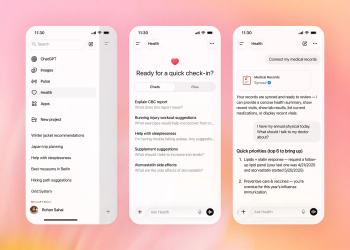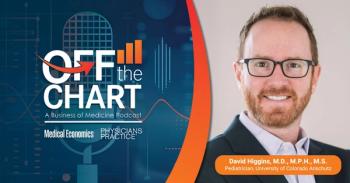
The dollars and sense: How AI-driven data insights drive value
Prioritizing the patient and employee experience starts with advanced listening and analytics, not more paper surveys.
For many, the modern conception of a primary care physician has shifted from someone who sits thoughtfully at the bedside, making eye contact, and taking handwritten notes, to a typist in front of a computer. But in the era of data in health care, more information and automation does not have to grow the distance between us – it can actually mean more empathy and humanity.
While the health care industry is among the most trusted by consumers globally, the patient experience is lagging,
Data has the power to transform health care by providing decision-makers with valuable insights that can drive more empathy. With the right tools, health care providers can gain a deeper understanding of their patients' lives, their needs, and their preferences — and then respond to them in real time. By seeing the bigger picture that data provides, health care leaders and their employees can create more personalized health care experiences.
Seeing the big picture by listening differently
Unfortunately, most health care systems are still equating experience data with inpatient surveys, known as
Why does it matter? At a time of record inflation rates and an uncertain labor market, economic conditions are having a real impact on people’s health. Research found
Deciding whether you want to listen to the violin section or the entire symphony of voices across your organization drives your ability to understand and act – and therefore, to grow the bottom line. For example, attending to a solicited survey with a 25% response rate from an outpatient setting when you could be analyzing all unstructured data for emotion, effort, and intent is not really listening. Even if reimbursement dollars are in the range of $2 million to $3 million for a large health care system, the quality, efficiency, and reduced churn at your contact center will likely add up to 100 times that. Additionally, mature experience programs that listen and understand the relationship between employee and patient experience data have twice the amount of revenue growth as those that do not. Consolidating listening platforms also saves organizations on average 20% to 40%.
It is not as simple as being nicer. When patients don’t feel emotionally connected to a clinician, much less a brand, costs skyrocket with repeat emergency room visits and fragmented care across settings. Nutrition-related care, routine preventive appointments, and mental health are the most common types of care people said they chose to skip, according to
Responding to feedback in real-time
Across all industries,
The future is in part, listening to what we already have, which is “hidden data” of chats, faxes, phone calls, etc. The only way to deeply understand an experience is to dig into emotion, which artificial intelligence (AI) and machine learning tools tools can do at scale with unstructured data. It’s about time we understood emotion in a highly emotional business like health care. The emotion that is inferred and spoken, the intensity of it, and the effort amplifying it. Technology can be used to segment experiences and populations and suggest next best actions that will matter most to that group. Given the overwhelming amount of alerts and information coming at frontline caregivers, AI powers the prioritized delivery of alerts and escalations while also automating positive reinforcement to spread the love.
Driving disruption – the good kind – in employee experience
Common sense tells us that patient and customer satisfaction starts with engaged employees who are enabled to deliver high quality, compassionate care. Especially concerning is recent
Correlations and drivers between employee and patient experience can now be identified automatically through data we have today. The subsequent benefit to organizations is about focusing the most impactful efforts in a world of shrinking attention spans. This means knowing what PX drivers of EX are and vice versa. Organizations can also save millions of dollars by simply combining their PX and EX platforms.
As economic conditions make access to health care more difficult and as health care workers continue to face burnout and staffing challenges, it’s never been more critical for leaders to use all the tools at their disposal, including advanced listening and analytics capabilities, to understand and drive precision improvements for both the patient and employee experience.
Newsletter
Stay informed and empowered with Medical Economics enewsletter, delivering expert insights, financial strategies, practice management tips and technology trends — tailored for today’s physicians.








